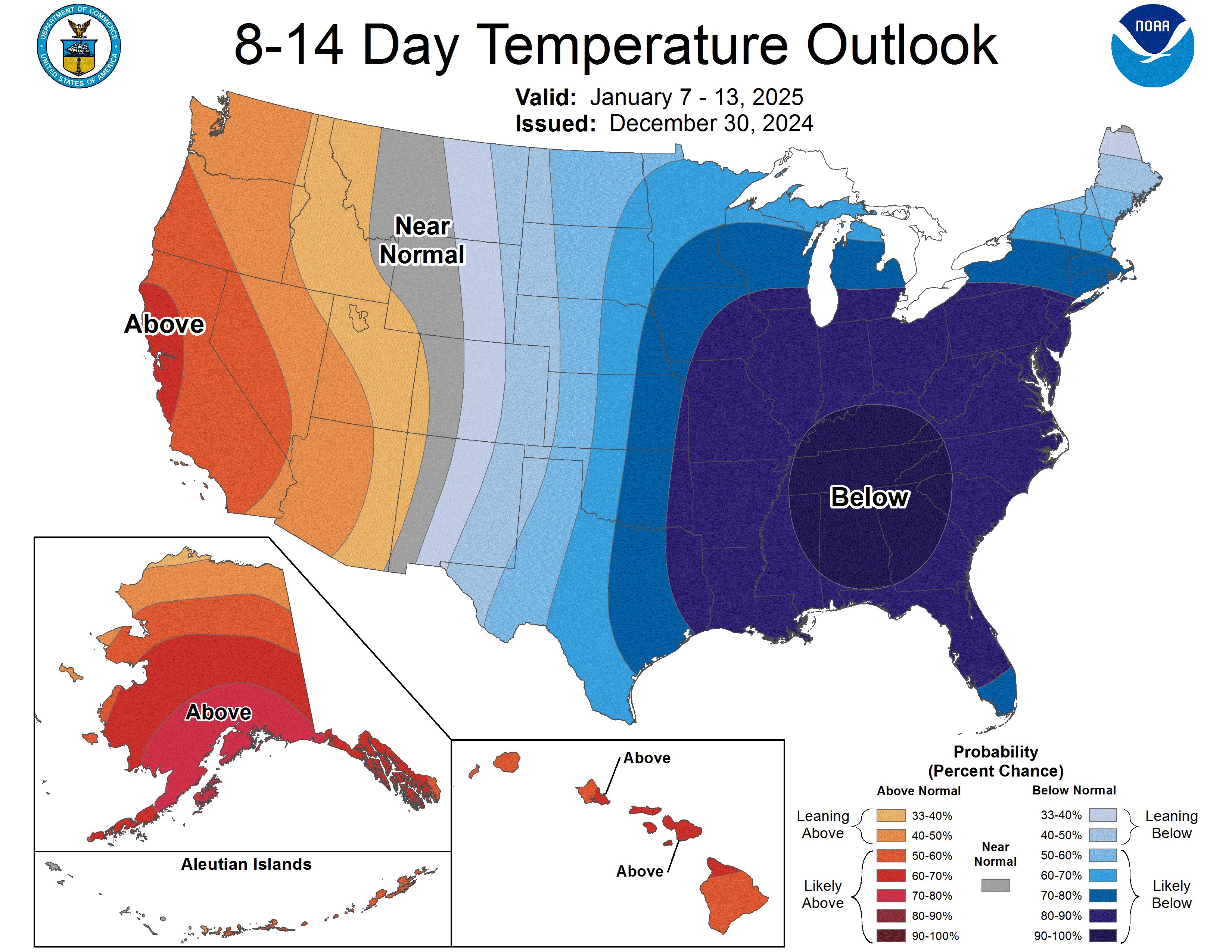Dust off the thermal underwear and watch out for falling iguanas: a polar vortex is bringing extremely cold weather to millions of Americans this January.
This weekend, between January 4 and 6, a winter storm will bring significant snow and ice to the Central Plains to the Mid-Atlantic East Coast, according to the US National Weather Service (NWS).
The cold weather will arrive on Saturday for the Central Plains, before heading eastwards towards the Ohio and Tennessee Valleys on Sunday, finishing in the Mid-Atlantic region on Sunday night and into the next week.
The chilly weather is expected to extend more broadly across the US, impacting a wider range of regions. Heavy snowfall is forecasted for much of the Appalachians, Ohio Valley, Mid-Atlantic, Great Lakes, and Northeast.

The eight to 14 day temperature outlook issued on December 30, 2024.
Image credit: NWS/NOAA
The coldest air of the season so far and dangerous wind chills are set to hit large parts of the Southeast, with sub-zero temperatures expected to reach as far south as Florida, as per the NWS.
This could bring significant problems to the Sunshine State’s highly sensitive citrus fruit and, if previous Januarys are anything to go by, could cause frozen-stiff iguana bodies to drop from the trees.
Until at least mid-January, colder-than-average weather will affect the eastern half of the US. Meanwhile, many western portions of the US will experience warmer than usual weather, including the Southwest, the Pacific Coast, Alaska, and Hawai’i.

A helpful explainer of how the polar vortex can impact weather in the Northern Hemisphere.
Image credit: NOAA
Some of the freakishly cold weather can be attributed to the polar vortex, a large region of cold air that swirls around the North Pole (and the South Pole, but that’s another issue). It constantly encircles the poles all year round, but the vortex weakens during the summer and strengthens during the winter. Now and again in winter months, the band of cold air can expand and become “wavy”, stirring up extra-chilly weather at lower latitudes, including North America and Europe.
This polar vortex activity has happened many, many times in the past few decades, including several notable colder outbreaks in 1977, 1982, 1985, 1989, and 2014. This year, however, could be a big one. According to Accuweather, January 2025 could see some of the most extreme conditions in the past 10-15 years, setting the month up to be the coldest January since 2011 for the US.
While the polar vortex is part of the weather’s “normal” playbook and not necessarily as scary as it sounds, folks should take care when extra-cold weather is about, especially if they’re venturing outside or driving. Please spare a thought for all those oranges and iguanas in Florida too.
Source Link: Polar Vortex To Bring Freezing Weather To US, Spelling Chaos For Roads And Iguanas